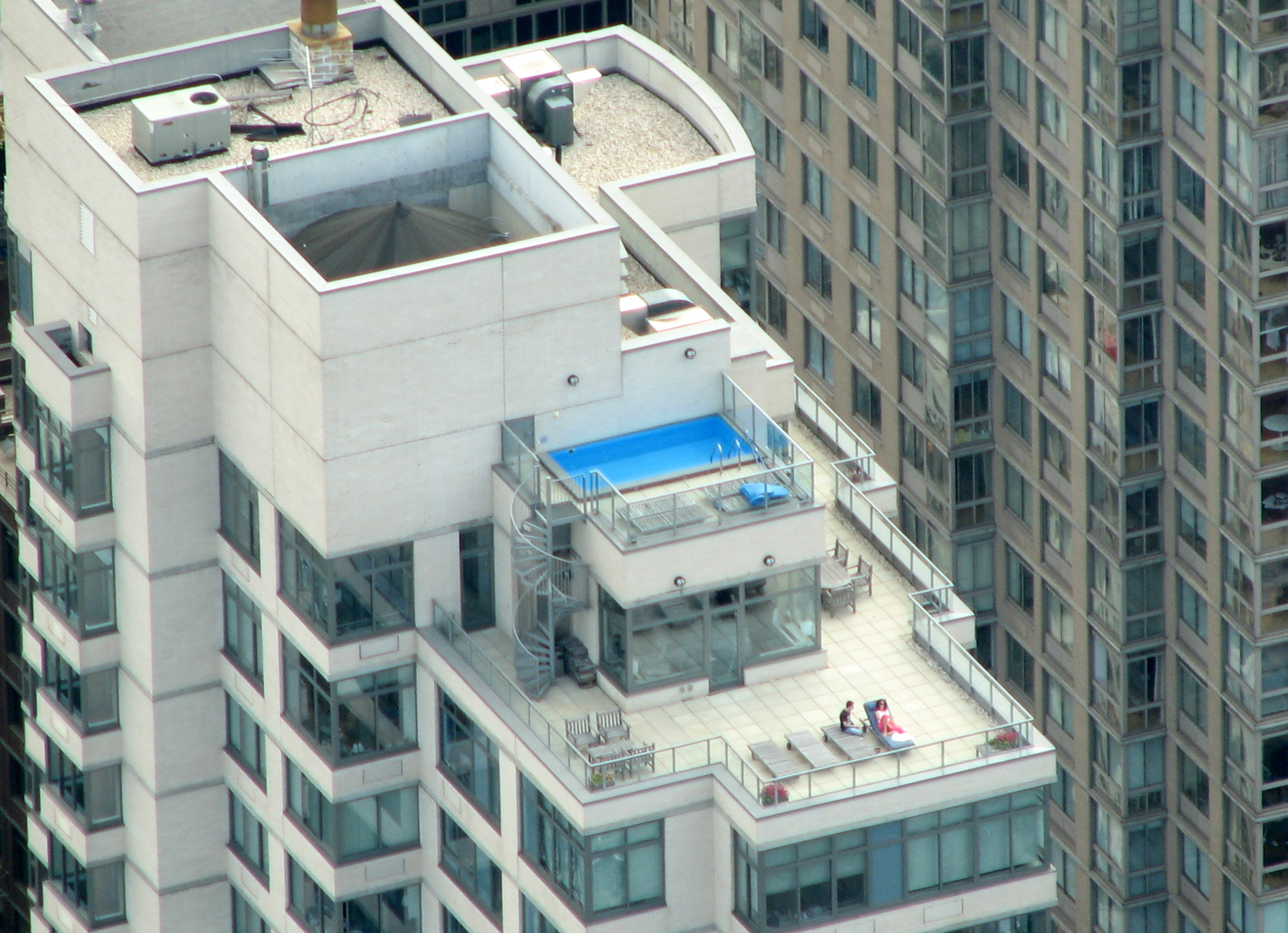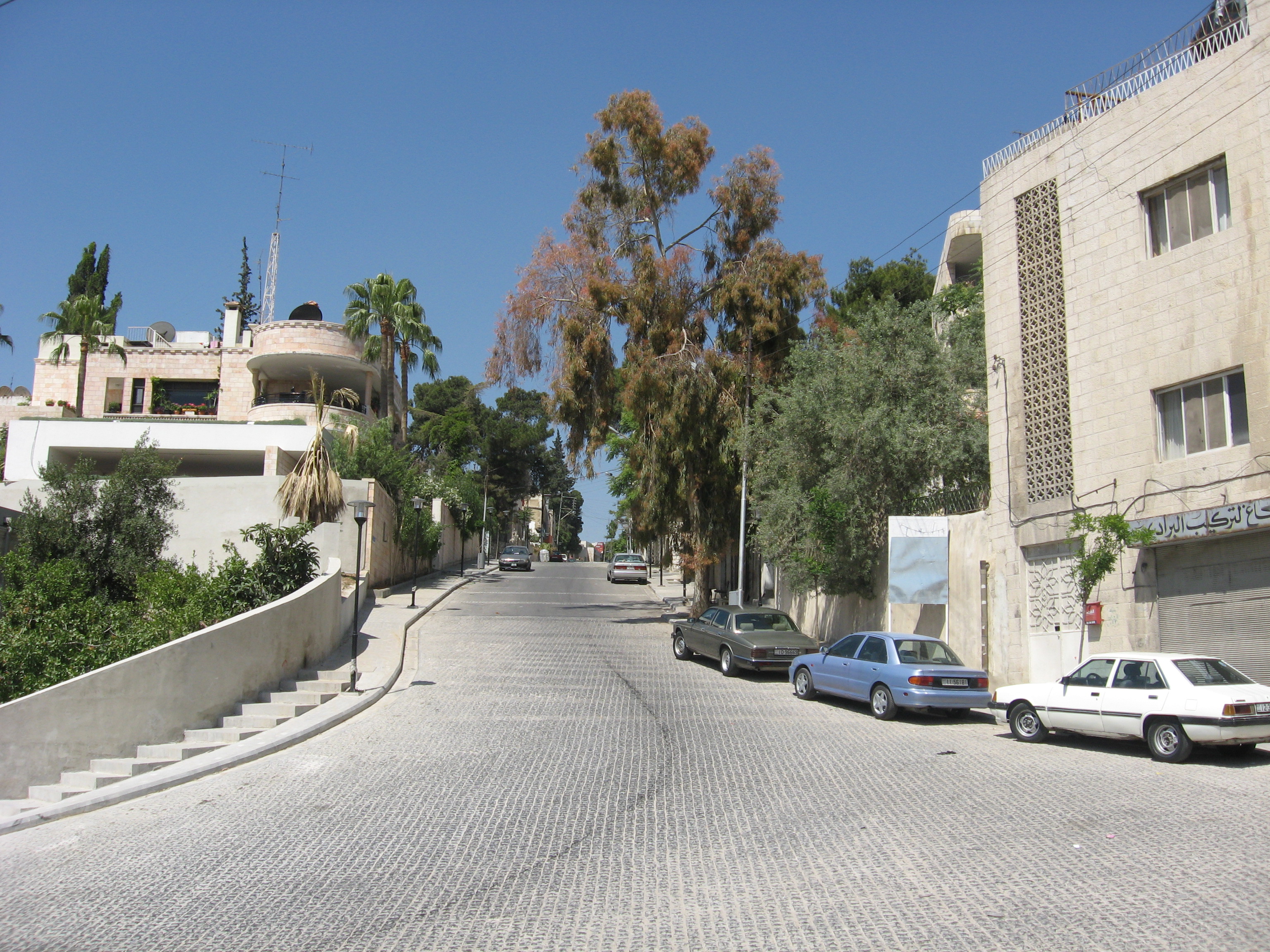|
Mango House
The Mango House is a building in Amman, Jordan. Situated on Mango Street, the house looks out toward Jabal Akhddar on the other side of the valley that is downtown Amman. Architecture The Mango House was designed by architect Mukhtar Saqr, who had also designed the close-by Al Bilbeisi House II. Located on Jabal Amman, the Mango House is an example of a new style of Jordanian architecture and differs greatly from the houses built in the area during the 1920s and 30s, as well as from its 1940s contemporaries. The house is built with smooth rose stone and has numerous wrap-around balconies. A similarity to other 1940s houses is the clear separation of rooms, instead of using a more traditional tripartite plan. The Mango House is built in two separate halves, so as to accommodate the two brothers living there when it was built. History The Mango House was built in the late 1940s by the brothers Kamal and Ali Mango, sons of Hamdi Mango, who were part of one of Amman's primary busine ... [...More Info...] [...Related Items...] OR: [Wikipedia] [Google] [Baidu] |
Amman
Amman (; ar, عَمَّان, ' ; Ammonite language, Ammonite: 𐤓𐤁𐤕 𐤏𐤌𐤍 ''Rabat ʻAmān'') is the capital and largest city of Jordan, and the country's economic, political, and cultural center. With a population of 4,061,150 as of 2021, Amman is Jordan's primate city and is the List of largest cities in the Levant region by population, largest city in the Levant region, the list of largest cities in the Arab world, fifth-largest city in the Arab world, and the list of largest metropolitan areas of the Middle East, ninth largest metropolitan area in the Middle East. The earliest evidence of settlement in Amman dates to the 8th millennium BC, in a Neolithic site known as ʿAin Ghazal, 'Ain Ghazal, where the world's ʿAin Ghazal statues, oldest statues of the human form have been unearthed. During the Iron Age, the city was known as Rabat Aman and served as the capital of the Ammon, Ammonite Kingdom. In the 3rd century BC, Ptolemy II Philadelphus, Pharaoh of Ptole ... [...More Info...] [...Related Items...] OR: [Wikipedia] [Google] [Baidu] |
Jordan
Jordan ( ar, الأردن; tr. ' ), officially the Hashemite Kingdom of Jordan,; tr. ' is a country in Western Asia. It is situated at the crossroads of Asia, Africa, and Europe, within the Levant region, on the East Bank of the Jordan River. Jordan is bordered by Saudi Arabia to the south and east, Iraq to the northeast, Syria to the north, and the Palestinian West Bank, Israel, and the Dead Sea to the west. It has a coastline in its southwest on the Gulf of Aqaba's Red Sea, which separates Jordan from Egypt. Amman is Jordan's capital and largest city, as well as its economic, political, and cultural centre. Modern-day Jordan has been inhabited by humans since the Paleolithic period. Three stable kingdoms emerged there at the end of the Bronze Age: Ammon, Moab and Edom. In the third century BC, the Arab Nabataeans established their Kingdom with Petra as the capital. Later rulers of the Transjordan region include the Assyrian, Babylonian, Roman, Byzantine, Rashidun ... [...More Info...] [...Related Items...] OR: [Wikipedia] [Google] [Baidu] |
Mango Street
Mango Street ( ar, شارع مانجو) is a historic street in the Jabal Amman area near downtown Amman, Jordan. Officially named ''Omar bin al-Khattab Street'' ( ar, شارع عمر بن الخطاب), the street derives its nickname from the Mango House, a building on the intersection between Mango and Rainbow A rainbow is a meteorological phenomenon that is caused by reflection, refraction and dispersion of light in water droplets resulting in a spectrum of light appearing in the sky. It takes the form of a multicoloured circular arc. Rainbows c ... Streets. Mango Street has an assortment of historic buildings, many being Ottoman, and across the street from the Mango House is Al-Mufti House. Books@Cafe and other locations such as Old View Cafe line the street. References Streets in Amman {{Jordan-road-stub ... [...More Info...] [...Related Items...] OR: [Wikipedia] [Google] [Baidu] |
Jabal Akhddar
Jabal, Jabel, Jebel or Jibal may refer to: People * Jabal (name), a male Arabic given name * Jabal (Bible), mentioned in the Hebrew Bible Places In Arabic, ''jabal'' or ''jebel'' (spelling variants of the same word) means 'mountain'. * Dzhebel, a town in Bulgaria * Jabal Amman, part of Amman, Jordan * Jabel, a German municipality * Jabal, Amreli, a village in Gujarat, India * Jabal Rural District, in Iran * Jebel, Timiș, a commune in Timiș County, Romania * Jebel, Turkmenistan, a town * Jibal Jibāl ( ar, جبال), also al-Jabal ( ar, الجبل), was the name given by the Arabs to a region and province located in western Iran, under the Umayyad and Abbasid Caliphates. Its name means "the Mountains", being the plural of ''jabal'' (" ... or al-Jabal, a late 1st-millennium-CE West-Asian realm Other uses * Djebel (1937–1958), a racehorse See also * * * * * * Jubal (other) {{disambiguation ... [...More Info...] [...Related Items...] OR: [Wikipedia] [Google] [Baidu] |
Jabal Amman
Jabal Amman neighborhood is one of the seven hills that originally made up Amman, Jordan. Today, Jabal Amman is near the downtown area. History Along with the rest of old Amman, Jabal Amman was first settled during the Neolithic period. But unlike nearby hills, particularly Jabal al-Qal'a, Jabal Amman was never fortified. It remained somewhat of a wooded outback until the 20th century, when Amman was declared the capital of Trans-Jordan and royalty, wealthy families, businesses, army officers, and politicians began moving into Jabal Amman. Soon, the ''jabal'' was informally established as an elite neighborhood of Amman. As Amman spread west, the 1st Circle was built and Jabal Amman became a primary east-west artery for the quickly expanding city. As the area aged, trees and greenery matured. Today, full grown trees line the streets of Jabal Amman. In 2005, the Greater Amman Municipality recognized Jabal Amman as a 'heritage attraction point' and set forth plans to preserve and ... [...More Info...] [...Related Items...] OR: [Wikipedia] [Google] [Baidu] |
Al-Mufti House
The Mufti House ( ar, بيت المفتي) is a house located on Rainbow Street-Mango Street intersection in the Jabal Amman neighbourhood of Amman, Jordan. Like many other houses in Jabal Amman, such as the Mango House across the street, 70 years has given the Mufti House time for a significantly wooded front yard to develop. A stair-stepped stone wall covered in ivy separates it from the main street. History The Mufti House was built in the late 1920s in the style of the Akrawi and Habböo House located to the south. Built by Umar Hikmat, a prominent Circassian, the house was sold to a fellow Circassian politician, Sa'id al-Mufti, in the mid-1930s. Mufti, who would later become the mayor of Amman, made numerous additions to the house as his prestige as a politician grew. A new kitchen, toilets and a dining room were added, in what would eventually become the present-day house. Most significantly, Mufti added the notable front porch during the 1950s. Around the same time, anoth ... [...More Info...] [...Related Items...] OR: [Wikipedia] [Google] [Baidu] |
Penthouse Apartment
A penthouse is an apartment or unit on the highest floor of an apartment building, condominium, hotel or tower A tower is a tall Nonbuilding structure, structure, taller than it is wide, often by a significant factor. Towers are distinguished from guyed mast, masts by their lack of guy-wires and are therefore, along with tall buildings, self-supporting .... Penthouses are typically differentiated from other apartments by luxury features. The term 'penthouse' originally referred, and sometimes still does refer, to a separate smaller 'house' that was constructed on the roof of an apartment building. Architecturally it refers specifically to a structure on the roof of a building that is Setback (architecture), set back from its outer walls. These structures do not have to occupy the entire roof deck. Recently, luxury high rise apartment buildings have begun to designate multiple units on the entire top residential floor or multiple higher residential floors including the top ... [...More Info...] [...Related Items...] OR: [Wikipedia] [Google] [Baidu] |
Rainbow Street
The Rainbow Street (Arabic: شارع الرينبو), originally named Abu Bakr al Siddiq street, is a public space in the historic area of Jabal Amman, near the center of downtown Amman, Jordan. The street runs east from the First Circle to Mango Street, and contains several attractions from roof top restaurants to pubs. The street runs in front of the British Council building, as well as the headquarters of the Jordan Petroleum Refinery Company and the cinema after which the street is renamed. Rainbow Street is the location of numerous companies and shops, including the Wild Jordan Center. It is also home to important sites from modern Jordanian history, including the al-Mufti House, the residence of King Talal (Teta Alice's House), and the home of former military commander and Prime Minister Zaid ibn Shaker. Souk Jara is located near the street. See also * List of roads in Amman *Tourism in Jordan Jordan is a sovereign Arab state in the Middle East. The capital, Amman, ... [...More Info...] [...Related Items...] OR: [Wikipedia] [Google] [Baidu] |
Houses Completed In The 20th Century
A house is a single-unit residential building. It may range in complexity from a rudimentary hut to a complex structure of wood, masonry, concrete or other material, outfitted with plumbing, electrical, and heating, ventilation, and air conditioning systems.Schoenauer, Norbert (2000). ''6,000 Years of Housing'' (rev. ed.) (New York: W.W. Norton & Company). Houses use a range of different roofing systems to keep precipitation such as rain from getting into the dwelling space. Houses may have doors or locks to secure the dwelling space and protect its inhabitants and contents from burglars or other trespassers. Most conventional modern houses in Western cultures will contain one or more bedrooms and bathrooms, a kitchen or cooking area, and a living room. A house may have a separate dining room, or the eating area may be integrated into another room. Some large houses in North America have a recreation room. In traditional agriculture-oriented societies, domestic animals such ... [...More Info...] [...Related Items...] OR: [Wikipedia] [Google] [Baidu] |
Buildings And Structures In Amman
A building, or edifice, is an enclosed structure with a roof and walls standing more or less permanently in one place, such as a house or factory (although there's also portable buildings). Buildings come in a variety of sizes, shapes, and functions, and have been adapted throughout history for a wide number of factors, from building materials available, to weather conditions, land prices, ground conditions, specific uses, prestige, and aesthetic reasons. To better understand the term ''building'' compare the list of nonbuilding structures. Buildings serve several societal needs – primarily as shelter from weather, security, living space, privacy, to store belongings, and to comfortably live and work. A building as a shelter represents a physical division of the human habitat (a place of comfort and safety) and the ''outside'' (a place that at times may be harsh and harmful). Ever since the first cave paintings, buildings have also become objects or canvasses of much artistic ... [...More Info...] [...Related Items...] OR: [Wikipedia] [Google] [Baidu] |





